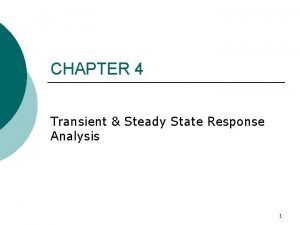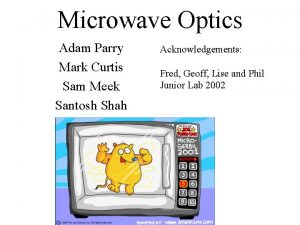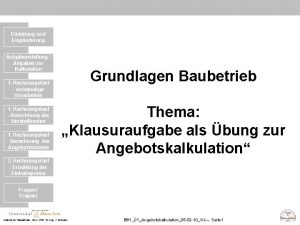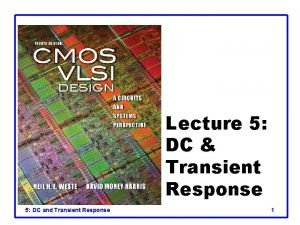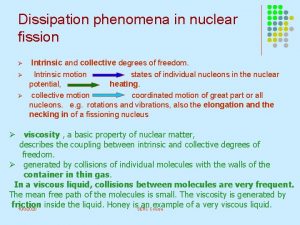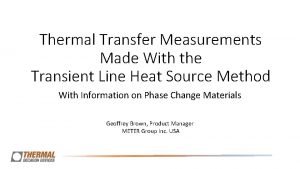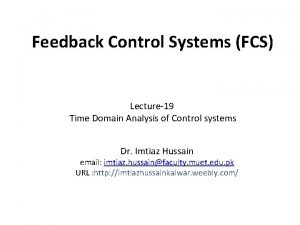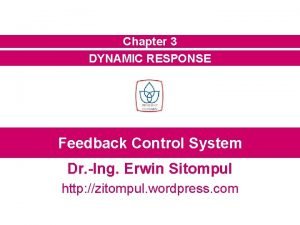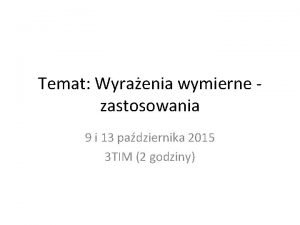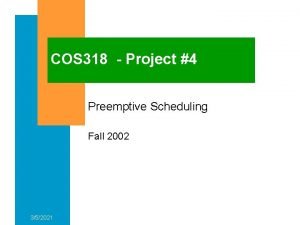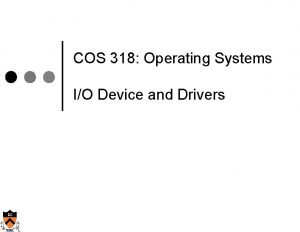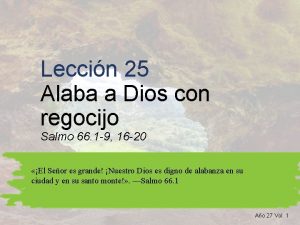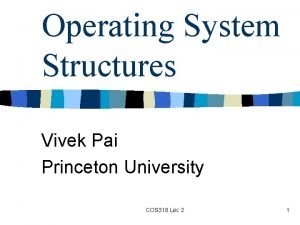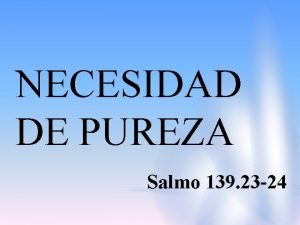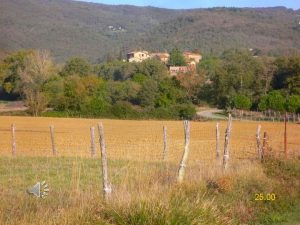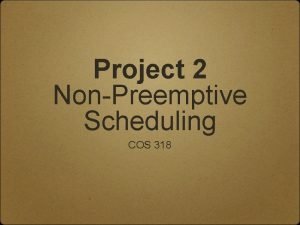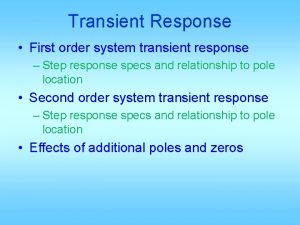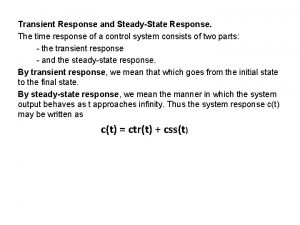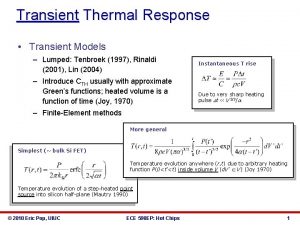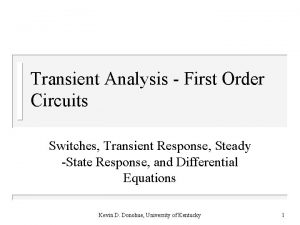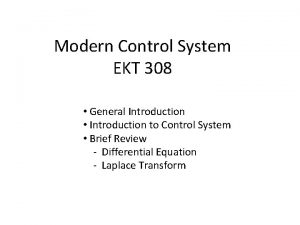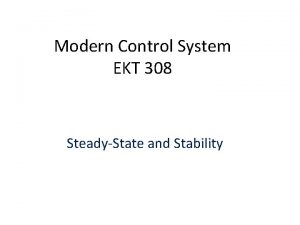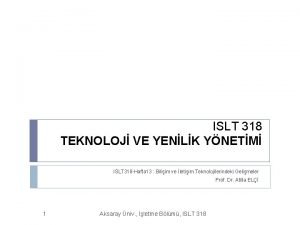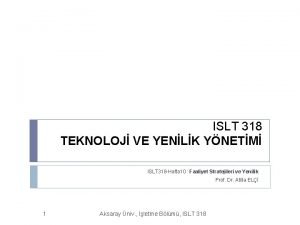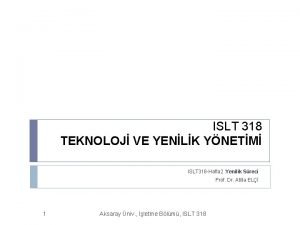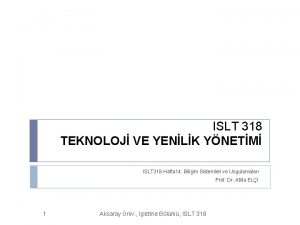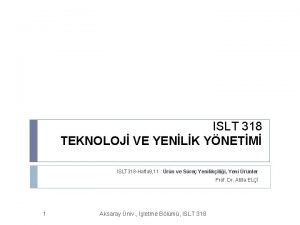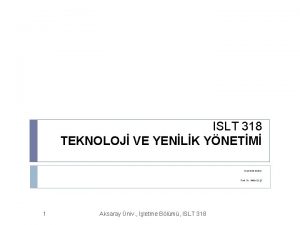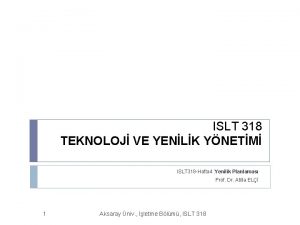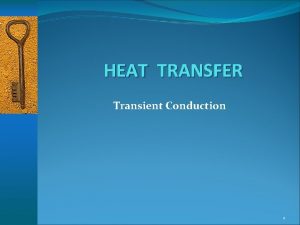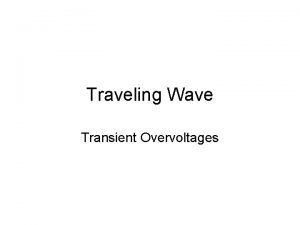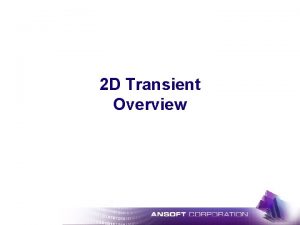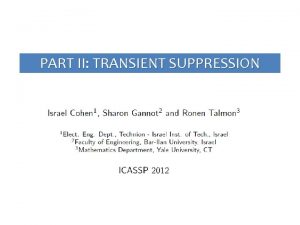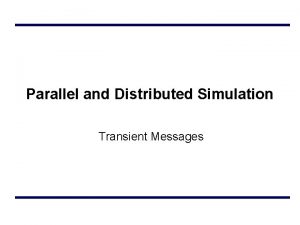Modern Control System EKT 318 Time Response Transient





































- Slides: 37

Modern Control System EKT 318 Time Response Transient and Steady-State Response Analysis

Typical Test Signals (Input signals) • • Impulse functions (*) Step functions (*) Ramp functions (*) Parabolic functions • Sinusoidal functions (Later in frequency analysis) • White noise

Test signals step Impulse unit impulse function is 1 ramp parabolic




First Order Systems R(s) + E(s) C(s) - Find the performance of the system when the following test signal is used: a) Unit step response, b) Unit ramp response, c) Unit Impulse response

Laplace Table …

Unit step response of first order systems: Partial fraction

Unit ramp response of first order systems: Inverse Laplace, from Laplace table

Unit impulse response of first order systems:

First order system parameter Consist of gain, K and Time constant,

First order system example:

1 2

3

Where:



First order system • Step 1: convert figure into Free Body Diagram • Step 2: Obtain the differential equation • Eg: • Step 3: obtain the transfer function: • Eg: • Step 4: rearrange the equation to the transfer function of 1 st order system: • Step 5: Convert into time domain using inverse Laplace

Second order system parameter Transfer function of a second order system (K=1) …. (1)

Second Order System Let us start with an example


Convert using laplace table: Factorize, you got

Example: Find the output, if the input is Unit Step The objective is to find how the output looks like ? R(s) r(t) Y(s) y(t) http: //www. emathhelp. net/calculators/algebra-2/partial-fraction-decomposition-calculator/

Step 1: find the partial fraction To find the output r(t), use Laplace Table (refer week 1 slides):

• System is often classified by its damping ratio, : Nature x(t) System Imaginary Un-damped Complex & conjugate Under-damped Real & equal Critically damped Real & distinct Over-damped overdamped critical damping • > 1 System is overdamped • = 1 System is critical damping • < 1 System is underdamped t underdamped

• System is often classified by its damping ratio, : x(t) overdamped critical damping • > 1 System is overdamped • = 1 System is critical damping • < 1 System is underdamped t underdamped

Real Life Example of damping. . Consider a door that uses a spring to close the door once open. This can lead to any of the above types of damping depending on the strength of the damping. If the door is undamped it will swing back and forth forever at a particular resonant frequency. If it is underdamped it will swing back and forth with decreasing size of the swing until it comes to a stop. If it is critically damped then it will return to closed as quickly as possible without oscillating. Finally, if it is overdamped it will return to closed without oscillating but more slowly depending on how overdamped it is.

Real-Life Example

Example 2: Find Unit Impulse response of a second order system The objective is to resemble

Constant From Laplace Table: Inverse Laplace:

Unit Impulse response (contd…)

Example: final exam question


What can you conclude from the system?

Modelling Overview

b which is damping
 Transient and steady state response in control system
Transient and steady state response in control system Microwave optics
Microwave optics Ekt kalkulation
Ekt kalkulation Yshss
Yshss Transient response in vlsi
Transient response in vlsi Rw + vo c inverter transient response vod inverte...
Rw + vo c inverter transient response vod inverte... Transient time
Transient time Transient line source analyzer
Transient line source analyzer Standard test signals in control system are
Standard test signals in control system are What is dynamic response in control system
What is dynamic response in control system Natural response and forced response
Natural response and forced response What is natural response
What is natural response A subsequent
A subsequent Start time end time and elapsed time
Start time end time and elapsed time Dwie koparki pracują razem wykonują wykop w ciągu 8 dni
Dwie koparki pracują razem wykonują wykop w ciągu 8 dni Ncgs 14-318
Ncgs 14-318 Salmo 318
Salmo 318 Cos 318
Cos 318 Cos 318°
Cos 318° Sia 318
Sia 318 Salmo 22 hebreo
Salmo 22 hebreo Salmo 66:19-20
Salmo 66:19-20 Salmo 318
Salmo 318 Cos princeton
Cos princeton Salmo 139, 23-24
Salmo 139, 23-24 Salmo 318
Salmo 318 Salmo 318
Salmo 318 Cos 318
Cos 318 Salmo 318
Salmo 318 Salmo 318
Salmo 318 Salmo 318
Salmo 318 Uib290
Uib290 303-318-9014
303-318-9014 Salmo 318
Salmo 318 Salmo penitencial por excelencia
Salmo penitencial por excelencia Cos 318
Cos 318 Cos 318°=
Cos 318°= Cos 318
Cos 318
